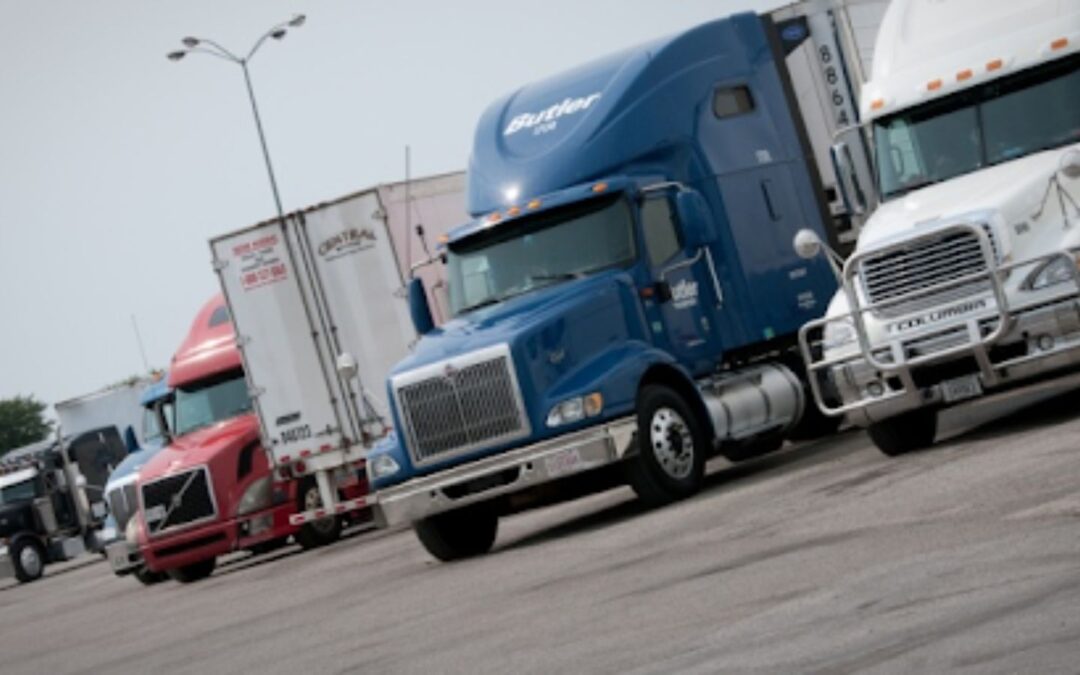In the vibrant tapestry of the commercial trucking industry, where every journey is a narrative of logistics and precision, the significance of the trucking MC number cannot be overstated. As an impassioned member of the dispatching realm, deeply attuned to the heartbeat of freight operations, I recognize the pivotal role that understanding and decoding MC/DOT requirements play in the symphony of compliance. Today, let’s embark on a journey of unraveling the intricacies of MC/DOT requirements, demystifying the regulatory landscape, and discovering the keys to ensuring compliance for commercial trucking companies. Whether you’re a seasoned trucking professional or a newcomer navigating the highways of regulations, this exploration is crafted to guide you through the labyrinth of trucking MC numbers and dispatch service with clarity, purpose, and a touch of enthusiasm.
The Prelude: Unveiling the Significance of Trucking MC Numbers
The trucking MC number, an alphanumeric identifier that resonates with authority and responsibility, serves as the prelude to a composition of compliance in the trucking industry. Beyond being a mere numerical code, it is the key that unlocks the door to a world of regulations set forth by the Department of Transportation (DOT). As a conductor of your trucking orchestra, the challenge lies not only in obtaining this number but in comprehending the requirements it entails. The journey through MC/DOT requirements is akin to deciphering a musical score; each note represents a safety standard, an operational guideline, or a documentation obligation.
Tip 1: Grasping the Essence of MC/DOT Requirements
Before delving into the specifics, it’s crucial to grasp the essence of MC/DOT requirements. These requirements are a comprehensive set of guidelines and regulations established by the DOT to ensure the safety, efficiency, and compliance of commercial trucking companies.
Key Aspects of MC/DOT Requirements:
Safety Regulations: MC/DOT requirements encompass safety protocols, including driver qualifications, vehicle maintenance standards, and adherence to hours-of-service regulations.
Operational Standards: Trucking companies must adhere to operational practices scrutinized during audits. This includes record-keeping processes, insurance coverage, and overall operational efficiency.
Documentation Obligations: Maintaining meticulous documentation is a cornerstone of MC/DOT compliance. This includes driver qualification files, vehicle maintenance records, hours-of-service logs, and insurance and registration documents.
Tip 2: The Role of Trucking MC Numbers in Compliance
At the heart of MC/DOT requirements lies the trucking MC number. This unique identifier, issued by the DOT, is a license for carriers to operate within the bounds of the law. Understanding the role of this number is fundamental to navigating the regulatory landscape.
Functions of Trucking MC Numbers:
Authorization to Operate: The MC number serves as an authorization for carriers to engage in interstate commerce. It signifies compliance with federal regulations and grants the privilege to transport goods across state lines.
 Identification in Audits: During audits and inspections, regulatory authorities use the MC number to identify and assess the compliance of trucking companies. It is a marker of a company’s commitment to adhering to safety and operational standards.
Identification in Audits: During audits and inspections, regulatory authorities use the MC number to identify and assess the compliance of trucking companies. It is a marker of a company’s commitment to adhering to safety and operational standards.
Tip 3: Steps to Obtain and Maintain a Trucking MC Number
Obtaining and maintaining a trucking MC number involves a series of steps that demand attention to detail and adherence to regulatory procedures. Here is a concise guide to the essential steps:
Steps to Obtain and Maintain a Trucking MC Number:
- Submit Application: Carriers must submit a comprehensive application to the Federal Motor Carrier Safety Administration (FMCSA). This application includes details about the company’s safety management practices, insurance coverage, and operational protocols.
- Pay Fees: A necessary step involves payment of application fees. The amount varies depending on factors such as the type of operation and the services provided by the carrier.
- Undergo Safety Audit: Following the application, carriers may undergo a safety audit conducted by the FMCSA. This audit assesses the carrier’s safety management systems, operational practices, and compliance with regulations.</p>
- Receive MC Number: Upon successful completion of the application process and safety audit, the carrier is issued a trucking MC number. This number must be prominently displayed on the company’s vehicles.
- Renewal and Compliance: Carriers must renew their MC number periodically. Compliance with ongoing safety regulations is paramount for maintaining the MC number.
Tip 4: Navigating the Documentation Maze with Technology
The sheer volume of documentation required for MC/DOT compliance can be overwhelming. However, advancements in technology have paved the way for innovative solutions that simplify the documentation process for trucking companies.
Technological Solutions for Documentation:
Compliance Software: Dedicated MC/DOT compliance software centralizes and organizes essential documents. This includes driver qualification files, vehicle maintenance records, and hours-of-service logs.
 Electronic Logging Devices (ELDs): ELDs automate the tracking of hours-of-service, reducing manual errors and ensuring accurate and real-time data.
Electronic Logging Devices (ELDs): ELDs automate the tracking of hours-of-service, reducing manual errors and ensuring accurate and real-time data.
Tip 5: Building a Culture of Safety and Compliance
Compliance with MC/DOT requirements is not just a checklist; it’s a cultural commitment to safety and excellence. Building a culture of safety within a trucking company involves instilling a mindset of responsibility and adherence to regulations.
Elements of a Safety Culture:
Continuous Training: Regular training sessions keep drivers and staff updated on safety protocols, operational practices, and changes in regulations.
Feedback Mechanisms: Encouraging open communication and feedback allows the identification and resolution of compliance issues promptly.
Bonus Tip: Embracing Continuous Learning
In the ever-evolving landscape of trucking regulations, embracing continuous learning is the key to staying ahead. Attend industry seminars, engage in online forums, and seek out the latest updates. By fostering a culture of ongoing education, your trucking company becomes a beacon of knowledge and adaptability in the dynamic world of commercial transportation.
Conclusion: Orchestrating Compliance Excellence in the Trucking Symphony
As the curtain falls on our exploration of MC/DOT requirements for commercial trucking companies, let the essence of compliance resonate as a symphony of responsibility, precision, and passion. The journey through trucking MC numbers is not merely a regulatory obligation but an opportunity to elevate the industry’s standards. May your trucking orchestra continue to play the harmonious melody of compliance, ensuring safety on the highways and excellence in every logistical endeavor. Remember, in the world of trucking, compliance is not just a requirement; it’s the rhythm that guides every successful journey.
My name is Andrea Thompson and I’m a home based freelance writer. I’m 23 years old, married to my best friend, and mother to a wonderfully independent and opinionated 3 year old girl and step-mother to a sweet seven year old boy. I live in a tiny, little town in Kentucky, where I spend my free time fishing with my kids.
Writing has always been my passion, which I followed through high school, and for a while in college. Life happened, and once I discovered we were pregnant, I switched directions; opting for the healthcare industry because of the stability.
Finally, years later, I was in a place where I could leave the day job that never truly made me happy, and pursue my dreams. I’ve built, and am still building, my writing career from scratch. But, I’m passionate and I’m good at what I do. And, in the end, I can prove to my daughter that she can do anything she wants with this life.





